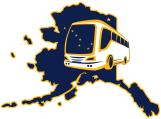Indigenous Cultures of Yukon
While Yukon was one of the last regions of North America to be colonized by Europeans, indigenous peoples have inhabited it for generations. Yukon First Nations people are believed to have migrated into the region via the Bering land bridge around 11,000 B.C., spreading out across Alaska and northern Canada and developing unique folkways based on the land they inhabited. While the indigenous peoples of Yukon have faced many struggles related to colonization and modernization, they retain their cultural traditions to this day.
As of the most recent Canadian census, First Nations people are estimated to make up roughly 20 percent of Yukon’s population. Read on to learn more about the indigenous peoples of Yukon.
Indigenous Cultures of Yukon

The exact number of indigenous people in Yukon prior to European contact in the 19th century is difficult to determine due to a lack of records, but most agree that the population was relatively small due to the difficulty of living in the remote, icy region. Estimates at the beginning of the 1800’s place the population between 7,000 and 9,000, but by 1830, the population had declined to 4,700. Successive waves of European contact would further reduce the indigenous population due to disease and environmental damage.
The six main tribes of Yukon were the Kutchin, Hän, Kaska, Tagish, Tutchone, and Teslin. Their languages are classified as part of the Athabascan family, reflecting their shared ancestry and heritage. Most followed a hunter-gatherer lifestyle, subsisting off of hunting, fishing, and trapping, with limited whaling around Yukon’s Arctic coast. The indigenous peoples of Yukon also often migrated between regions, following seasonal changes and shifts in food sources. Despite the relative isolation of Yukon, the First Nations of the region developed lucrative trade routes with the Tlingit people on the coast of modern-day Alaska, connecting them to the wider world.
Following European contact in the 19th century, the lives of indigenous peoples in Yukon changed forever. Many indigenous peoples found work as merchants, trading furs with the explorers of the Hudson’s Bay Company. The Klondike Gold Rush also had a deep, lasting effect on the lives of indigenous people, as increased contact with settlers caused mass die-offs due to diseases such as smallpox, to which the First Nations had no immunity. At the same time, indigenous peoples also found employment opportunities as scouts and laborers, and many indigenous peoples married settlers, helping shape the modern culture of Yukon.
In the 1960’s, First Nations in Yukon formed the Yukon Indian Advancement Association in order to press land claims and indigenous rights that had been trampled on by the Canadian government. This began a long period of negotiation between First Nations representatives and the Canadian and Yukon governments. In 1990, land claims were settled via the Yukon Final Umbrella Agreement, which resolved long-standing issues between the First Nations of Yukon and Canada. First Nations organizations continue to advocate on behalf of indigenous peoples in Yukon and to resolve issues that arise with continued development of the mining resources in the region to ensure that First Nations’ rights are respected.
At the moment, the Canadian government recognizes 14 First Nations within Yukon: the Carcross and Tagish, the Kwanlin Dun, the Ta’an Kwach’an, the Kluane, the Champagne, the Aishihik, the Little Salmon and Carmacks, the White River, the Ross River, the Vuntut Gwitchin, the Tr’ondëk Hwëch’in, the Selkirk, the Nacho Nyak Dun, and the Liard. These First Nations vary in size from a few dozen people to several thousand.
A major issue facing First Nations in Yukon is the decline in native languages. A survey conducted in the mid-2000’s showed that only 12 percent of Yukon First Nations people were fluent in their nation’s language. In 1991, the Voices of the Talking Circle program was launched, which aims to promote the use of native languages in Yukon. Additionally, CBC promotes native-language use through its CBC North programming, offering television and radio programs in the languages of First Nations people. The Yukon territorial government also recognizes some native languages with regards to government and healthcare services.
In modern Yukon, many First Nations find employment in the territory’s growing mining industry, which has brought increased prosperity to communities that have been beset by alcoholism and unemployment. Many First Nations also profit from tourism and promoting their traditional culture and arts and crafts, aided by a general cultural revival among Arctic indigenous peoples in the past few years.
Conclusion

Despite their small population, the indigenous peoples of Yukon showcase great diversity in their languages and cultures. Indigenous residents of Yukon have struggled with numerous problems over the past few decades, including alcoholism, poverty, and the disruption introduced by European colonialism. They have managed to rise above these challenges and preserve their culture in the face of numerous obstacles, forming unique folkways that persist in the modern world.
